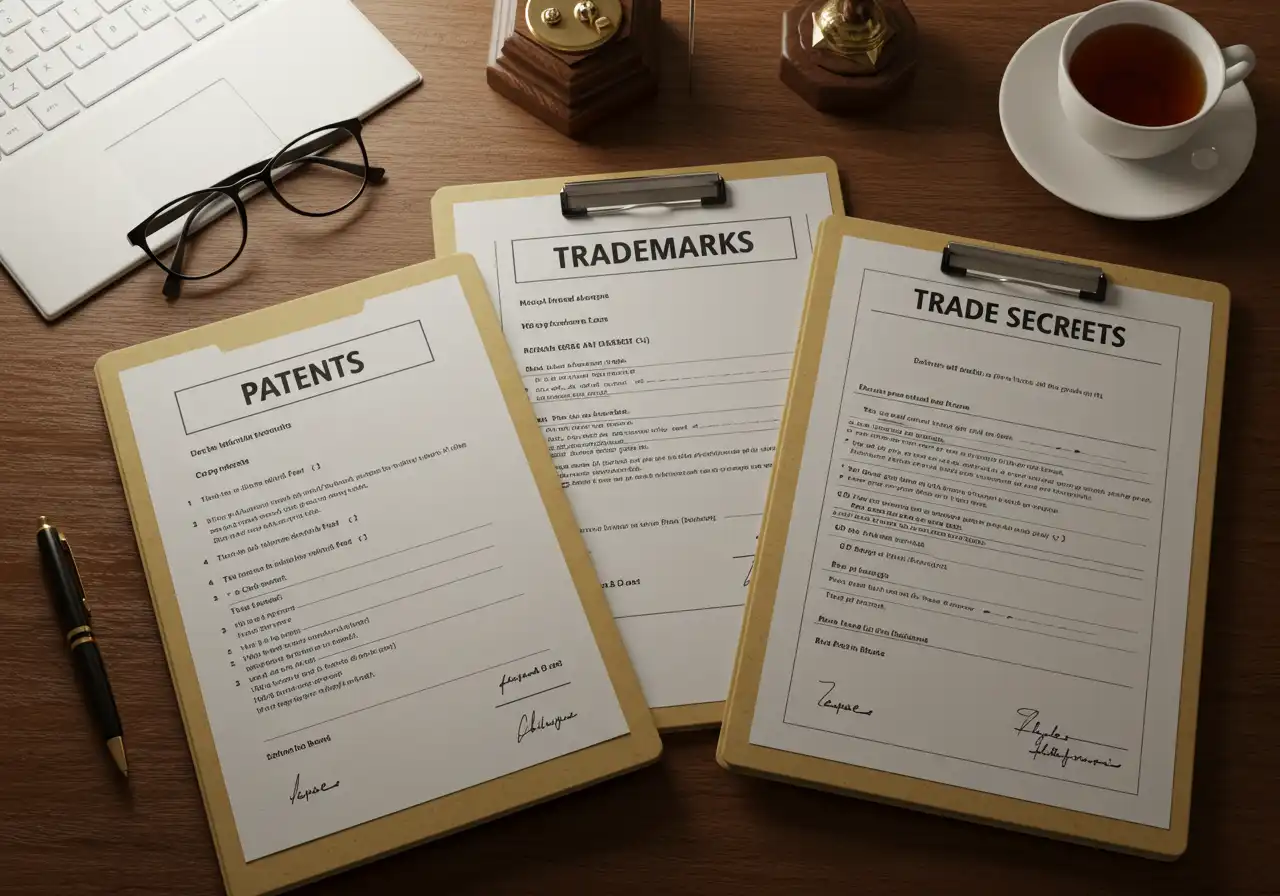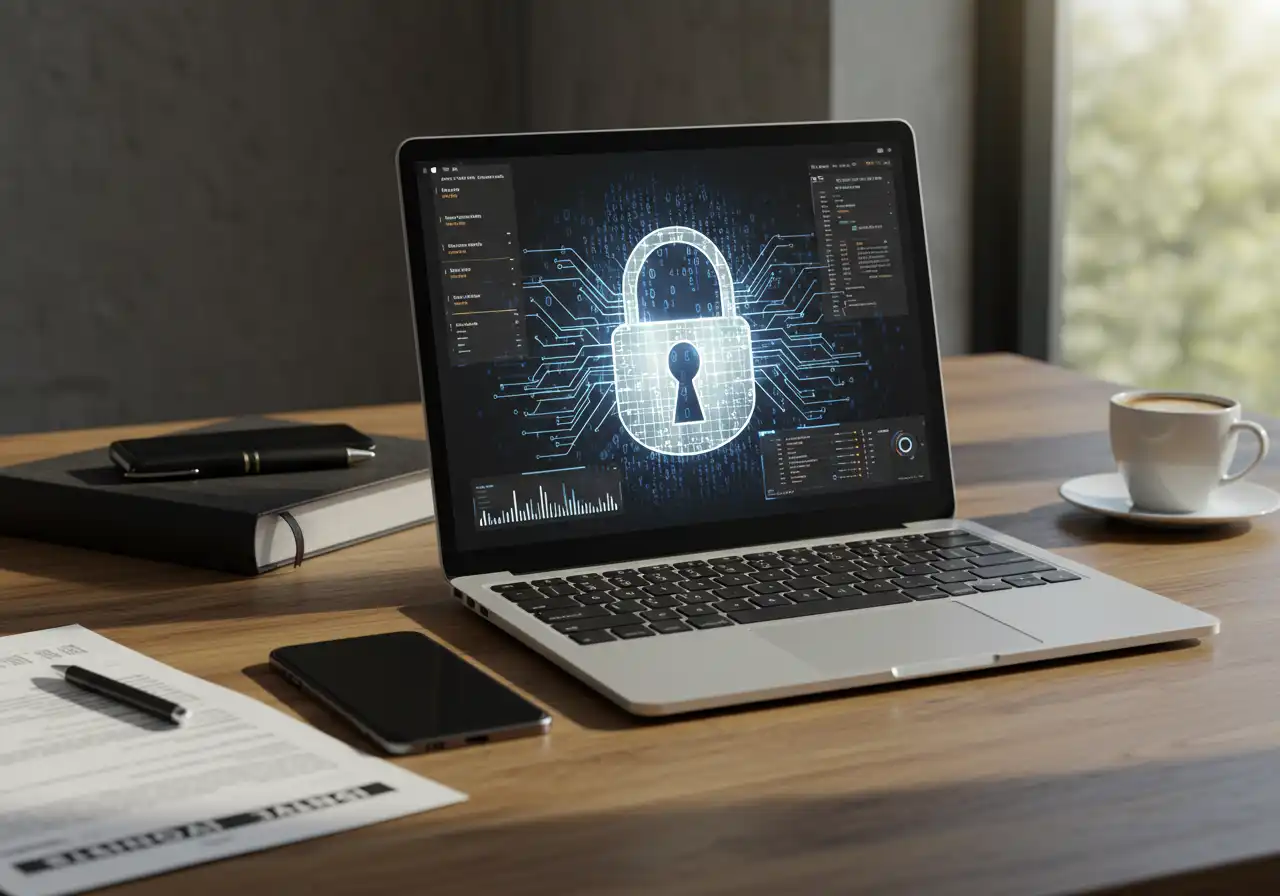Protecting Your Intellectual Property in the Digital Age
Protecting your intellectual property is no longer just a legal concern—it’s a business imperative. As organizations adapt to rapid digital transformation, the value of intangible assets has skyrocketed. Ideas, inventions, creative works, and confidential processes now circulate at unprecedented speed across global networks. This constant flow of information exposes intellectual property to new threats.
Here are some of the key threats to intellectual property in the digital age:
- Digital Piracy: Illegal copying and distribution of software, music, videos, and written content occur within seconds after release. The scale and anonymity offered by the internet amplify these risks.
- Cyber Threats: Hackers target proprietary algorithms, product designs, trade secrets, and research data. Data breaches can result in immediate loss of market advantage and long-term reputation damage.
- Unauthorized Sharing: Employees or partners can inadvertently or intentionally leak sensitive documents without robust controls.
Intellectual property protection in the digital age means defending your business against these increasingly sophisticated risks. Failing to act puts innovation, brand reputation, and revenue streams in jeopardy.
The digital landscape rewards creativity but punishes complacency. Only proactive measures safeguard your IP from escalating threats.
Understanding how to combine technology and legal strategies is essential for anyone serious about protecting their intellectual property in today’s environment.
Understanding Intellectual Property in the Digital Age
To navigate the digital world, it’s important to understand the different types of intellectual property (IP) and how technology affects their protection. Each category of IP gives specific exclusive rights, but the shift to digital brings new challenges.
Key Types of Intellectual Property and Their Exclusive Rights
Here are the main types of intellectual property and what rights they grant:
Patents
Patents cover inventions and grant the holder exclusive rights to make, use, sell, or license the patented technology for a set period. This legal monopoly incentivizes innovation but requires full public disclosure of how the invention works.
Trademarks
Trademarks protect brand identifiers—names, logos, and slogans—that distinguish goods or services. Owners can prevent others from using similar marks that might cause confusion in the marketplace.
Copyrights
Copyrights secure original creative works: literature, music, art, and software code. The copyright holder controls reproduction, distribution, adaptation, public performance, and display of their work.
Trade Secrets
Trade secrets safeguard confidential business information—formulas, processes, and customer lists—that provide a competitive edge. Unlike patents or copyrights, trade secret protection depends on maintaining secrecy rather than formal registration.
Digital IP Challenges for Each Type
The move to online platforms presents unique challenges for all types of intellectual property:
- Patents face rapid global exposure—the details disclosed in filings can be copied or reverse-engineered by competitors worldwide.
- Trademarks become vulnerable to domain squatting and unauthorized social media use; fake accounts and lookalike websites can dilute brand value instantly.
- Copyrighted materials are easily duplicated and distributed without permission via file-sharing networks, streaming sites, or even AI-generated outputs.
- Trade secrets are threatened by cyberattacks; confidential files can be stolen with a single data breach or mishandled through cloud storage misconfigurations.

Technology’s Disruption of Traditional Protection Methods
Traditional methods of protecting intellectual property relied heavily on physical barriers:
- Locked file cabinets for trade secrets
- Print-based copyright notices
- Registered trademarks are limited by geographic borders
However, these approaches are becoming outdated in digital environments:
“One click can copy an entire database; one email attachment can leak proprietary code.”
The shift to digital brings both opportunities and risks. Content scraping tools can automatically gather information on a large scale; blockchain technology introduces new ways to prove ownership; artificial intelligence blurs the lines between original creation and derivative work.
To stay ahead, we must recognize these challenges and adjust our strategies as technology continues to evolve. Protecting intellectual property is no longer just about filling out forms—it requires a combination of legal knowledge and technical expertise.
Digital Tools and Strategies for Intellectual Property Protection
Effective protection of intellectual property relies on the use of strong digital IP management tools. These solutions use technology to tackle modern risks, making sure that sensitive assets remain under control.
Digital Rights Management (DRM) Systems
Digital Rights Management (DRM) systems are crucial for controlling how digital content is accessed and shared. By embedding usage restrictions directly into files, DRM enables you to:
- Set explicit access rights for users, devices, or regions
- Prevent unauthorized copying, sharing, or editing
- Enable time-limited access or pay-per-use models
- Track usage data for compliance and analytics
Streaming platforms like Netflix and Spotify rely on DRM to enforce licensing terms, preventing piracy and unauthorized redistribution. For authors and publishers, DRM-integrated ebooks restrict copy-paste functions and limit device downloads. Furthermore, with advancements in technology such as Matter casting, DRM can also facilitate secure and seamless integration for media applications.
Encryption for IP Security
Encryption changes sensitive information into unreadable code unless the correct decryption key is used. This method is essential when sending files over public networks or storing proprietary data in cloud environments.
Key applications include:
- End-to-end encryption in messaging platforms or file-sharing services to block interception by third parties
- Securing source code repositories for software developers
- Protecting confidential documents through password-based encryption or hardware security modules (HSMs)
Even if a breach happens, encrypted assets stay inaccessible without the right credentials.
Software Solutions for Digital IP Management
A growing range of software tools helps businesses manage and protect their digital intellectual property:
- Asset management platforms: Centralized dashboards to track patents, trademarks, copyrights, and trade secrets throughout their lifecycle
- Content monitoring software: Automated scanning for copyright violations or leaked assets across websites and social media
- Watermarking solutions: Invisible or visible marks embedded in images, videos, or documents to establish ownership and deter misuse
- Contract automation tools: Streamlined drafting and enforcement of licensing agreements or NDAs
By using these digital tools—DRM systems, encryption methods, and automated monitoring—you can proactively protect creative assets from unauthorized use while simplifying compliance with changing regulations. This technology-driven approach empowers organizations to keep up with threats targeting intellectual property in a rapidly evolving digital landscape.
It’s important to note that these strategies are part of a broader framework outlined in resources such as the USPTO’s TEACH report, which provides valuable insights into effective intellectual property management practices.
Monitoring, Enforcement, and Cybersecurity Measures for Safeguarding Intellectual Property
Protecting your intellectual property in the digital age relies on careful monitoring, quick enforcement, and strong cybersecurity. Digital assets are constantly under threat—from copyright violations to complex cyberattacks—requiring a comprehensive strategy.
Proactive Monitoring Tools
Using real-time monitoring tools is crucial for spotting unauthorized access or changes to digital assets. Solutions like PlagScan, Copyscape, and DMCA Protection search the internet for copied content, providing automatic notifications when they find plagiarism or copyright violations. File integrity monitoring systems, such as Tripwire, keep an eye on critical repositories or cloud storage for any unauthorized changes.
Copyright Infringement Detection
Platforms like Pixsy track the use of copyrighted images online, while YouTube’s Content ID examines uploaded videos for matching music or footage.
Plagiarism Monitoring
Tools like Turnitin are used in academic and creative fields to protect written works from unauthorized copying.
Legal Enforcement Actions
When violations are found, prompt legal action becomes necessary. This may include:
- Sending cease-and-desist letters to offenders.
- Submitting Digital Millennium Copyright Act (DMCA) takedown requests to hosting providers.
- Taking legal action against ongoing or widespread infringements.
A strong legal enforcement protocol for intellectual property not only discourages future violations but also reinforces your rights according to the law.
Cybersecurity for IP Protection
To keep sensitive information confidential and intact, it’s important to follow robust cybersecurity practices:
- Encryption: Encrypt both stored (at rest) and transmitted (in transit) files to limit exposure if breaches occur.
- Access Controls: Restrict IP access through authentication systems and least-privilege principles.
- Data Breach Prevention: Deploy Intrusion Detection Systems (IDS), firewalls, and regular vulnerability assessments.
Common Cyber Threats
Digital intellectual property faces various threats, such as:
- Ransomware attacks targeting proprietary data
- Phishing schemes aimed at credential theft
- Insider threats from employees misusing access
- Exploitation of software vulnerabilities
To stay ahead, continuous investment in technology, employee awareness training, and immediate response protocols is essential. Being vigilant about cyber threats ensures that unauthorized use is not only detected but also prevented whenever possible—this is a crucial part of safeguarding your intellectual property in the digital age.
Legal Frameworks, Employee Training, and Internal Policies for Comprehensive Intellectual Property Management
Legal protection is the foundation of any strong intellectual property (IP) strategy. Without clear agreements and enforceable contracts, even the best technical safeguards may not be enough. Several legal tools are crucial in defining ownership, usage rights, and disclosure conditions.
Key Legal Tools for IP Protection
- Licensing Agreements: These documents outline how third parties can use your IP. Terms often specify permitted uses, duration, sublicensing rights, and geographic scope. Clear licensing terms prevent confusion and support quick action if misuse occurs.
- Non-Disclosure Agreements (NDAs): NDAs prohibit sharing confidential information with unauthorized parties. Whether you’re protecting algorithms, product plans, or trade secrets, NDAs create a legal obligation for secrecy.
- Work-for-Hire Contracts: When hiring freelancers or contractors to create works or inventions, work-for-hire clauses establish that all resulting IP belongs to your business—not the individual creator.
- Non-Compete Clauses: These provisions restrict an employee’s ability to work for competitors or start competing businesses using proprietary knowledge gained during their employment.
Having a comprehensive contract portfolio reduces the risk of misunderstandings and gives you leverage if disputes arise.
Employee Education on IP
Legal agreements are only effective when employees understand their responsibilities:
- Regular Training: Employees benefit from routine sessions explaining what qualifies as confidential information and how to handle it—both digitally and in person.
- Clear Internal Policies: Documented procedures for data handling, device use, open-source compliance, and social media communication set expectations across the organization.
- Incident Reporting Mechanisms: Staff should know exactly how to report suspected leaks or breaches of protocol without fear of retaliation.
Combining legal frameworks with ongoing education cultivates a culture where protecting intellectual property becomes second nature. This approach not only reduces accidental disclosures but also strengthens your legal position should litigation become necessary.
Effective management of internal policies paves the way for advanced brand protection strategies—especially when monitoring digital platforms for misuse or infringement.

Protecting Your Brand Online and Strategic Intellectual Property Management
Online brand protection is crucial in maintaining the integrity of your trademarks and overall reputation. With the rise of social media, it has become important to monitor unauthorized use of trademarks across these platforms. Here are some strategies:
Trademark Monitoring on Social Media
Use specialized software tools designed for trademark monitoring to automatically search for unauthorized use of your brand name or logo. These tools can scan multiple platforms and notify you of potential infringements.
Responding to Infringements
When an infringement is detected, prompt action is necessary. This can include sending cease-and-desist letters, reporting violations to platform administrators, or pursuing legal action if necessary.
Brand reputation risks related to online infringement or damage require proactive management:
Utilize reputation management services that track mentions of your brand online, providing insights into how your brand is perceived and alerting you to potential issues.
Handling Negative Publicity
Develop a crisis management plan to address negative publicity swiftly and effectively. This includes having a communications strategy in place for addressing public concerns and rectifying misinformation.
By combining these strategies with strong internal policies and employee training programs, you safeguard your brand’s integrity in the dynamic digital landscape.
Conclusion
Protecting your intellectual property in the digital age requires a multifaceted approach. In-house legal counsel plays a crucial role in developing customized IP strategies, combining technological tools with legal frameworks to effectively safeguard assets.
Key Components of IP Protection
- Technological Integration: Legal teams use digital rights management (DRM) systems, encryption, and advanced software solutions to control access and protect digital content.
- Legal Frameworks: Utilizing licensing agreements, non-disclosure agreements (NDAs), and other contracts ensures robust legal protection for patents, trademarks, copyrights, and trade secrets.
Coordinating efforts across different departments enhances comprehensive IP protection. Working together with IT departments for cybersecurity measures, marketing teams for brand protection, and human resources for employee training creates a unified strategy. This collaboration is crucial in reducing risks related to piracy, unauthorized use, and cyber threats.
By combining technological tools with strong legal frameworks, you can create an effective IP strategy that secures your valuable assets in today’s digital landscape.
